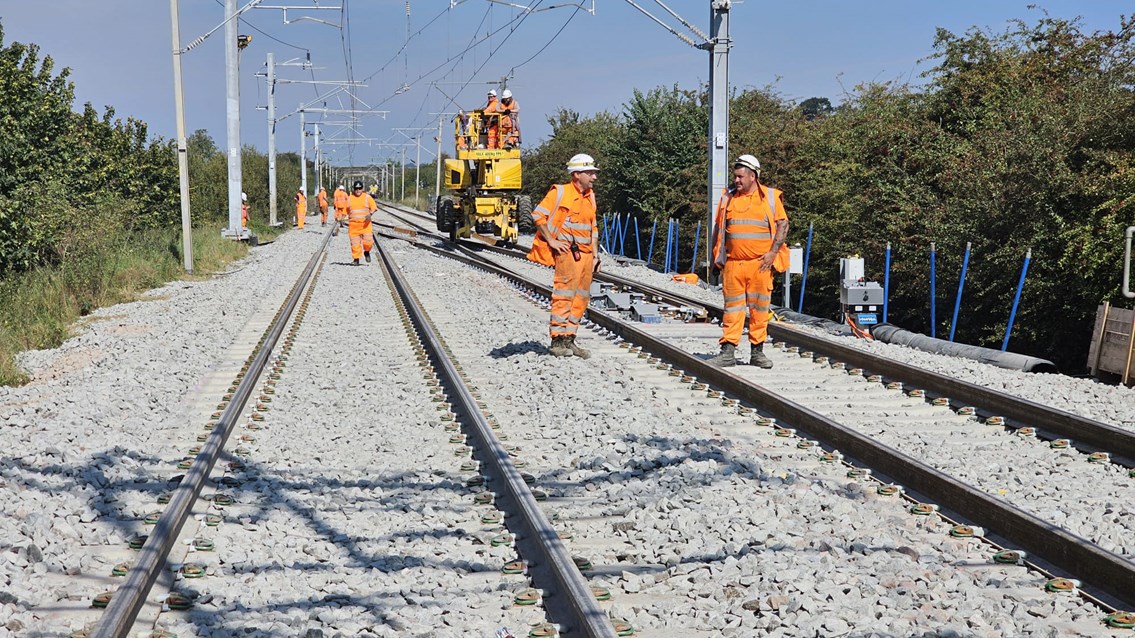Network Rail says its engineers worked round the clock for 9 days on the project, which will allow freight trains to travel from one of Europe’s busiest mixed-use passenger and freight routes to the new SEGRO logistics park in Northampton.
The work has seen new track, points and signalling systems installed to connect the existing railway to the new sidings at the under-construction freight facility.
When complete next year, the logistics park will provide 5 million square ft of warehouse space and employ up to 7,000 people.
The new railway connection, which will be used by freight company Maritime, will see thousands of tonnes of goods switch between rail and road beside Junction 15 of the M1 motorway every day.
Once operational, four freight trains will serve the new Northampton interchange each day – with the capacity for more in future.
Each freight train takes up to 76 heavy good vehicles off the road, making it a much greener way to transport economically important goods around the country.
Commenting on the news, James Dean, Network Rail’s West Coast South route director, said:
“Connecting this new freight interchange to the mainline railway network is a huge milestone and shows our commitment to working with freight operators to moving more goods in the most environmentally friendly way possible – by rail. We know this work has meant longer journeys for passengers over the last nine days, so I’d like to thank everyone impacted for bearing with us while we carried out this important work which will benefit both the environment and the economy in future.”
John Williams, Maritime executive chairman, added:
“These developments, at SEGRO Logistics Park Northampton are important, long-term commitments for Maritime to reduce our environmental footprint by developing a network of low carbon, strategic freight connections across the country to promote modal shift from road to rail for container transport and for domestic distribution, with local distribution by electric-powered trucks. Building and operating modern, inland rail freight interchanges, supported by the largest dedicated fleet of vehicles in the country, enables us to deliver terminal to terminal rail solutions and highly efficient rail to door and door to rail services for our customers who are looking for long term, supply chain protection and sustainable transport solutions.”
The West Coast Main Line is one of the busiest freight routes in Europe carrying 40% of all UK rail freight traffic.
Further work will now take place with freight operators and developers with the interchange expected to be operational in 2024.









